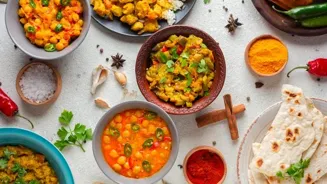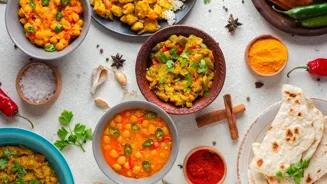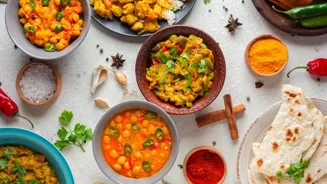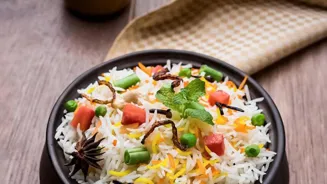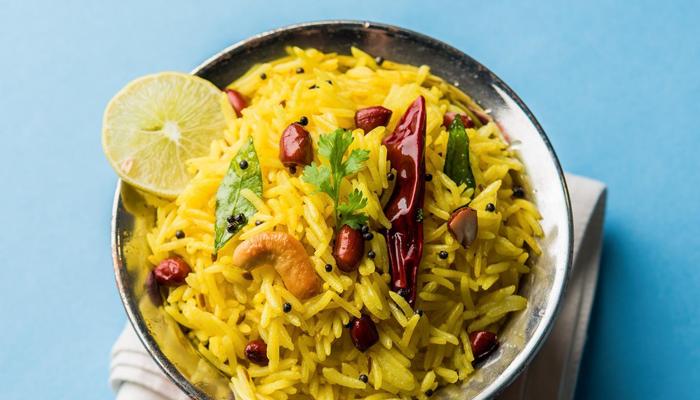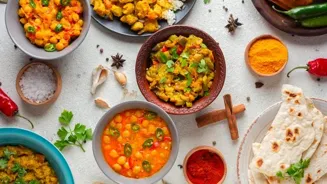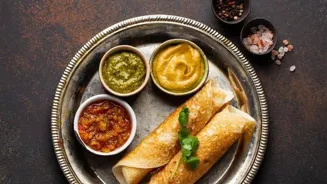Unveiling the Art of Crafting Perfect Dosas: Dive into the secrets of creating this iconic South Indian delight!
The dosa, a crispy, golden-brown pancake made from fermented batter, is a South Indian staple
enjoyed across India and beyond. More than just breakfast food, it's a culinary art form, with variations that reflect regional tastes and family traditions.
Mastering the perfect dosa is a journey, one that requires patience, practice, and a keen understanding of the ingredients involved. This article delves into the secrets behind creating the perfect dosa, from the perfect batter consistency to the ideal cooking technique.
We explore this beloved dish.
Dosa perfection lies in fermented rice and urad dal batter
The foundation of a good dosa lies in its batter. The traditional recipe calls for a combination of rice and urad dal (black lentils), soaked for several hours and then ground into a smooth paste.
The fermentation process, which can take anywhere from 8 to 12 hours depending on the weather, is crucial for developing the characteristic sour taste and light, airy texture.
Many home cooks have their own unique ratios of rice to dal, with some adding a small amount of fenugreek seeds to enhance fermentation and add a subtle flavor.
The consistency of the batter is also critical; it should be thin enough to spread easily on the hot griddle but thick enough to hold its shape. A well-fermented batter will have a slightly frothy appearance and a tangy aroma.
Art of dosa batter: secret rice-dal ratio, fermenting tips for perfect texture
Preparing the batter is an art in itself. The ratio of rice to urad dal is a closely guarded secret, often passed down through generations. Some prefer a 3:1 ratio, while others swear by 4:1. The type of rice used also makes a difference.
Parboiled rice is commonly used, but some cooks experiment with other varieties like sona masoori or even brown rice for a healthier twist. The urad dal should be of good quality, preferably whole urad dal, as it produces a better texture.
After soaking, the rice and dal are ground separately, then combined and allowed to ferment. During fermentation, the batter doubles in volume. It's important to stir it gently to release the trapped gases.
The batter should be neither too thick nor too runny; the consistency should be like that of a thin milkshake, allowing it to spread easily on the hot griddle.
Choosing the right tawa for dosa making is crucial
The choice of tawa, or griddle, is another important factor in dosa making. A well-seasoned iron tawa is considered the best, as it distributes heat evenly and imparts a unique flavor to the dosa.
However, non-stick tawas are also popular, especially for beginners, as they prevent the dosa from sticking and make it easier to flip. Before making the first dosa, the tawa should be heated to the right temperature, not too hot and not too cold.
To check the temperature, sprinkle a few drops of water on the tawa; the water should sizzle and evaporate quickly. The tawa is lightly greased with oil or ghee, using a halved onion or a cloth dipped in oil.
Then, a ladleful of batter is poured onto the center of the tawa and spread quickly in a circular motion, creating a thin, even layer.
Cooking dosa: tips for perfecting the crispy, golden-brown treat
Cooking the dosa to perfection requires a bit of practice and skill. Once the batter is spread, a drizzle of oil or ghee is added around the edges to help the dosa crisp up. The heat should be medium-high, allowing the dosa to cook evenly and develop a golden-brown color.
As the dosa cooks, small holes will appear on the surface. These holes are a sign that the dosa is cooking properly. Once the bottom is golden-brown and crispy, the dosa is loosened from the tawa with a spatula and flipped carefully.
The other side is cooked for a shorter time, just until it is lightly browned. The dosa can be folded in half or rolled into a cone shape before serving.
Serving dosa with sambar and coconut chutney is essential
Serving the dosa is as important as making it. A perfect dosa is incomplete without the right accompaniments. Sambar, a lentil-based vegetable stew, and coconut chutney are the classic pairings.
Sambar is tangy, flavorful, and packed with vegetables, making it a nutritious and delicious complement to the dosa. Coconut chutney is creamy, slightly sweet, and subtly spiced, adding a refreshing contrast to the crispy dosa.
Other popular accompaniments include tomato chutney, onion chutney, and podi, a spicy lentil powder. Each chutney offers a different flavor profile, allowing you to customize your dosa experience.
Perfect dosa making is an art of patience and practice, leading to crispy, flavorful creations
Making the perfect dosa is an ongoing journey. Each time you make a dosa, you learn something new, whether it's tweaking the batter ratio, perfecting your spreading technique, or experimenting with different chutneys. The key is to be patient, persistent, and open to experimentation.
With practice, you'll be able to create dosas that are crispy, flavorful, and truly unforgettable. You'll be making dosas that become a family favorite. And each dosa will be piece of South Indian culinary art. Enjoy the process, and savor the delicious results!
AI Generated Content. Glance/InMobi shall have no liability for the content